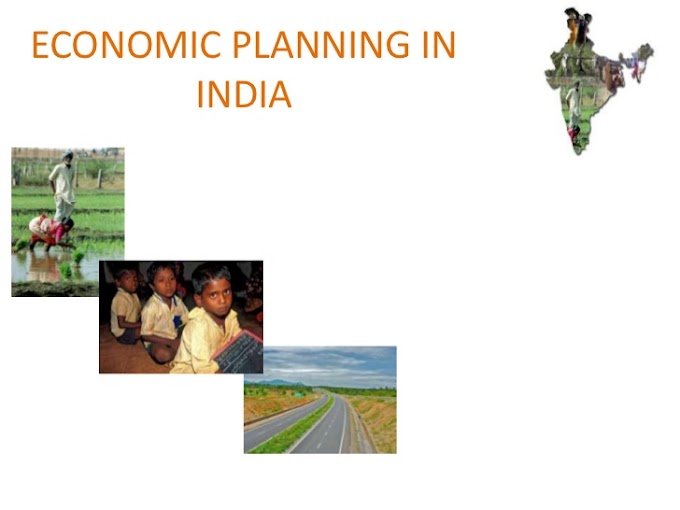Nebular Theory
- There are many ideas about the formation and evolution of the Solar System.
- The accepted idea is that 4.6 billion years ago, there was a very big cloud of gas in our area of space, known as a nebula.
- The Nebula eventually became so big that gravity pulled all the gas to the center.
- Eventually because of all the gas it became so hot there that some hydrogen atoms fused together to make helium.
- As they did this a lot of energy was let out.
- All this energy eventually made the Sun.
- The leftover gas and dust made the planets, their moons, asteroids and all other objects in the Solar System.
- Scientists think now that solarsystems are created out of a huge cloud of gas. The process by which the solar sytems are created is called the Nebular Theory.
Background
The age of the Earth was once, and still is, a matter great debate. In 1650 Archbishop Ussher used the Bible to calculate that the Earth was created in 4004BC. Later on in the mid-nineteenth century Charles Darwin believed that the Earth must be extremely old because he recognised that natural selection and evolution required vast amounts of time.
It wasn't until the discovery of radioactivity that scientists began to put a timescale on the history of the Earth. Rocks often contain heavy radioactive elements which decay over long periods of time, the decay is unaffected by the physical and chemical conditions and different elements decay at different rates (These rates are slow and half-lifes of several hundred million years are not uncommon)
Throughout this century the race has been on to discover the oldest rocks in the world. The oldest volcanic rock found so far has been dated at 3.75 billion years old, but this is not the whole story. Meteorites created at the same time as the Earth hit us all the time, radioactive dating shows that they are about 4.55 billion years old.
The Origin of Earth
- The formation of Earth occurred as part of the formation of the Solar System.
- It started as a large rotating cloud of dust and gas.
- This cloud, the solar nebula, was composed of hydrogen and helium produced in the Big Bang, as well as heavier elements produced in supernovas.
- Then, about 4.68×109 years ago, the solar nebula began to contract, rotate and gain angular momentum.
- This may have been triggered by a star in the region exploding as a supernova, and sending a shock wave through the solar nebula.
- As the cloud rotated, it became a flat disc perpendicular to its axis of rotation.
- Most of the mass concentrated in the middle and began to heat up.
- Meanwhile, the rest of the disc began to break up into rings, with gravity causing matter to condense around dust particles.
- Small fragments collided to become larger fragments, including one collection about 150 million kilometers from the centr: this would become the Earth.
THE EARLY ATMOSPHERE
|
The present composition of the atmosphere is: |
|
|
|
|
|
|
|
|
|
The atmosphere wasn't like this when the Earth was created over 4½ billion years ago.
The First Billion Years
The Earth's surface was originally molten, as it cooled the volcanoes belched out massive amounts of CARBON DIOXIDE, STEAM, AMMONIA and METHANE. There was NO OXYGEN. The STEAM condensed to form water which then produced shallow seas.
Evidence points to bacteria flourishing 3.8 billion years ago so this means that life got under way about 700 million years after the Earth was created. Such early forms of life existed in the shallow oceans close to thermal vents, these vents were a source of heat and minerals.
The Next Billion Years
These primitive life forms then took the next evolutionary step and started to PHOTOSYNTHESISE (using sunlight to convert carbon dioxide and water to food energy and oxygen). This was an important turning point in Earth history because the carbon dioxide in the atmosphere was being converted to oxygen.
|
|
|
|
THE LAST 2½ BILLION YEARS OR SO
As soon as the oxygen was produced by photosynthesis it was taken out again by reacting with other elements (such as iron).This continued until about 2.1 billion years ago when the concentration of oxygen increased markedly. As oxygen levels built up and then . . . . . .
|
The structure of the Earth
- The outer shell of the Earth is called the CRUST
- The next layer is called the MANTLE
- The next layer is the liquid OUTER CORE
- The middle bit is called the solid INNER CORE
The deepest anyone has drilled into the earth is around 12 kilometres, we've only scratched the surface. How do we know what's going on deep underground?
There are lots of clues:
- The overall density of the Earth is much higher than the density of the rocks we find in the crust. This tells us that the inside must be made of something much denser than rock.
- Meteorites (created at the same time as the Earth, 4.6 billion years ago) have been analysed. The commonest type is called a chondrite and they contain iron, silicon, magnesium and oxygen (Others contain iron and nickel). A meteorite has roughly the same density as the whole earth. A meteorite minus its iron has a density roughly the same as Mantle rock (e.g. the mineral called olivine).
- Iron and Nickel are both dense and magnetic.
- Scientists can follow the path of seismic waves from earthquakes as they travel through the Earth. The inner core of the Earth appears to be solid whilst the outer core is liquid (s waves do not travel through liquids). The mantle is mainly solid as it is under extreme pressure (see below). We know that the mantle rocks are under extreme pressure, diamond is made from carbon deposits and is created in rocks that come from depths of 150-300 kilometres that have been squeezed under massive pressures.
Important points
The Earth is sphere (as is the scotch egg!) with a diameter of about 12,700Kilometres. As we go deeper and deeper into the earth the temperature and pressure rises. The core temperature is believed to be an incredible 5000-6000°c.
The crust is very thin (average 20Km). This does not sound very thin but if you were to imagine the Earth as a football, the crust would be about ½millimetre thick. The thinnest parts are under the oceans (OCEANIC CRUST) and go to a depth of roughly 10 kilometres. The thickest parts are the continents (CONTINENTAL CRUST) which extend down to 35 kilometres on average. The continental crust in the Himalayas is some 75 kilometres deep.
The mantle is the layer beneath the crust which extends about half way to the centre. It's made of solid rock and behaves like an extremely viscous liquid. The convection of heat from the centre of the Earth is what ultimately drives the movement of the tectonic plates and cause mountains to rise. The outer core is the layer beneath the mantle. It is made of iron and nickel. Complex convection currents give rise to a dynamo effect which is responsible for the Earth's magnetic field. The inner core is the bit in the middle!. It is made of iron and nickel. Temperatures in the core are thought to be in the region of 5000-6000°c and it's solid due to the massive pressure.
Earth Strucure in Detail
This diagram shows a detailed picture of the Earth's interior. Crust is being created at the mid ocean ridges and being eaten at the subduction zones. The movement processes are driven by the convection currents created by the heat produced by natural radioactive processes deep within the Earth.
Inner core: depth of 5,150-6,370 kilometres
The inner core is made of solid iron and nickel and is unattached to the mantle, suspended in the molten outer core. It is believed to have solidified as a result of pressure-freezing which occurs to most liquids under extreme pressure.
Outer core: depth of 2,890-5,150 kilometres
The outer core is a hot, electrically conducting liquid (mainly Iron and Nickel). This conductive layer combines with Earth's rotation to create a dynamo effect that maintains a system of electrical currents creating the Earth's magnetic field. It is also responsible for the subtle jerking of Earth's rotation. This layer is not as dense as pure molten iron, which indicates the presence of lighter elements. Scientists suspect that about 10% of the layer is composed of sulphur and oxygen because these elements are abundant in the cosmos and dissolve readily in molten iron.
D" layer: depth of 2,700-2,890 kilometres
This layer is 200 to 300 kilometres thick. Although it is often identified as part of the lower mantle, seismic evidence suggests the D" layer might differ chemically from the lower mantle lying above it. Scientists think that the material either dissolved in the core, or was able to sink through the mantle but not into the core because of its density.
Lower mantle: depth of 650-2,890 kilometres
The lower mantle is probably composed mainly of silicon, magnesium, and oxygen. It probably also contains some iron, calcium, and aluminium. Scientists make these deductions by assuming the Earth has a similar abundance and proportion of cosmic elements as found in the Sun and primitive meteorites.
Transition region: depth of 400-650 kilometres
The transition region or mesosphere (for middle mantle), sometimes called the fertile layer and is the source of basaltic magmas. It also contains calcium, aluminium, and garnet, which is a complex aluminium-bearing silicate mineral. This layer is dense when cold because of the garnet. It is buoyant when hot because these minerals melt easily to form basalt which can then rise through the upper layers as magma. Upper mantle: depth of 10-400 kilometres
Solid fragments of the upper mantle have been found in eroded mountain belts and volcanic eruptions. Olivine (Mg,Fe)2SiO4 and pyroxene (Mg,Fe)SiO3 have been found. These and other minerals are crystalline at high temperatures. Part of the upper mantle called the asthenosphere might be partially molten.
Oceanic crust: depth of 0-10 kilometres
The majority of the Earth's crust was made through volcanic activity. The oceanic ridge system, a 40,000 kilometre network of volcanoes, generates new oceanic crust at the rate of 17 km3 per year, covering the ocean floor with an igneous rock called basalt. Hawaii and Iceland are two examples of the accumulation of basalt islands. Continental crust: depth of 0-75 kilometres
This is the outer part of the Earth composed essentially of crystalline rocks. These are low-density buoyant minerals dominated mostly by quartz (SiO2) and feldspars (metal-poor silicates). The crust is the surface of the Earth. Because cold rocks deform slowly, we refer to this rigid outer shell as the lithosphere (the rocky or strong layer).
Geological Time Scale
Geologists and geomorphologists describe the Earth's geologic history through a temporal system known as the geologic time scale (see the table on next page).
- On this scale, time is measured using the following four units of time:
- eons
- eras
- periods
- epochs
- All of these temporal subdivisions are established on the occurrence of some important geologic event.
- For example, Hadean Eon represents the time on Earth when life did not exist.
- During the Archean Eon life started and was dominated by one-celled prokaryotic life forms.
- Eukaryotic one-celled organisms became dominant in the Proterozoic Eon.
- Multicellular organisms ruled the planet during the eon known as the Phanerozoic.
Geologic time scale
|
Eon |
Era |
Period |
Epoch |
Major Geologic Milestones |
|
Phanerozoic |
Cenozoic |
Quaternary |
Holocene |
Modern humans develop. Pleistocene Ice Age Interglacial. |
|
Pleistocene |
Pleistocene Ice Age. Extinction of many species of large mammals and birds. |
|||
|
Tertiary |
Pliocene |
Development of hominid bipedalism. Cascade Mountains began forming. Climate cooling. |
||
|
Miocene |
Chimpanzee and hominid lines evolve. Extensive glaciation in Southern Hemisphere. Climate cooling. |
|||
|
Oligocene |
Browsing mammals and many types of modern plants evolve. Creation of the Alps and Himalaya mountain chains. Volcanoes form in Rocky Mountains.
|
|||
|
Eocene |
Primitive monkeys evolve and Himalayas began forming. Australian plate separates from Antarctica. Indian plate collides with Asia. |
|||
|
Paleocene |
Rats, mice, and squirrels evolve. Shallow continental seas become less widespread. |
|||
|
Mesozoic |
Cretaceous |
First flowering plants, greatest dinosaur diversity, Cretaceous Mass Extinction (65 m BP), and Andes Mountains form. Africa and South America begin to separate. Climate cooling because of mountain building. Shallow seas have extensive distribution. |
||
|
Jurassic |
First birds and mammals appear. Nevadian Mountains form. Large areas of the continents covered by shallow seas. Climate generally warm and stable with little seasonal or latitudinal variation. Shallow seas expanding. |
|||
|
Triassic |
First dinosaurs. Extensive deserts exist in continental interiors. Climate warm. Shallow seas limited in distribution. |
|||
|
Paleozoic |
Permian |
Permian Mass Extinction. Reptiles become more diverse. Climate cold at beginning of the Permian then warms. Average elevation of landmasses at their highest shallow seas less extensive. |
||
|
Pennsylvanian |
First reptiles appear.Winged insects evolve. Occasional glaciation in Southern Hemisphere. |
|||
|
Mississippian |
Primitive ferns and insects evolve. Forests appear and become dominant. Mountain building producing arid habitats in the interior of some continents. |
|||
|
Devonian |
First amphibians and trees appear. Appalachian Mountains form. Extinction of primitive vascular plants. Landmasses generally increasing in altitude. Climate cooling. |
|||
|
Silurian |
Major extinction event occurs. First land plants and insects. Continents are generally flat. Tectonic uplift begins. |
|||
|
Ordovician |
First fish and fungi. Greatest extent of shallow seas. Climate becoming warmer. |
|||
|
Cambrian |
Invertebrates become common. Fossilization of the Burgess Shale. Large areas of shallow seas near the equator. Climate was warm. |
|||
|
Proterozoic |
Also known as Precambrian |
Eukaryotic cell organisms develop. First multicellular organisms. Changes in the lithosphere created major land masses and extensive shallow seas. |
||
|
Archean |
Slow development of the lithosphere, hydrosphere, and atmosphere. First single-celled prokaryotic organisms. |
|||
|
Hadean |
Earth's oldest rocks come from the end of this Eon. |
|||





